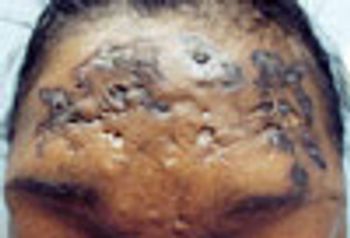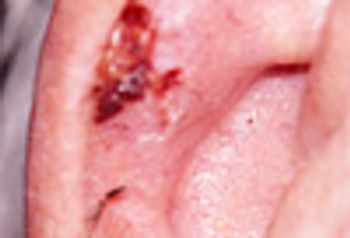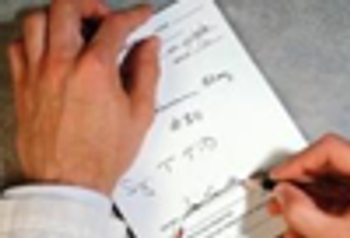
Diagnostic colonoscopy revealed innumerable polyps carpeting the mucosa from the rectum to the cecum. Endoscopic findings and family history were most consistent with familial adenomatous polyposis.

Diagnostic colonoscopy revealed innumerable polyps carpeting the mucosa from the rectum to the cecum. Endoscopic findings and family history were most consistent with familial adenomatous polyposis.

A 58-year-old man presents for evaluation of a facial rash. He is convinced, from internet research, that he has systemic lupus erythematosus.

A 26-year-old African American woman was concerned about the gradual onset of mildly tender, but severely distressing facial lesions. She had not sought medical attention previously because of a lack of insurance and assurances by her mother that this was only "bad acne." Does this look like acne to you? Click here for more details.

Did you know: The hepatitis B virus is the only human virus that is routinely tested for by measuring a marker, or “footprint,” of the virus in the blood? Here, an explanation for this and 4 more things you need to know about HBV.

A 28-year-old woman presents with a 4-month history of diarrhea and a 15-lb weight loss. She reports starting “another new diet” a few months ago but was in good health until these symptoms began. There is no family history of GI disease and no sick contacts. She denies recent travel.

US government guidelines tell how to treat HIV/AIDS effectively, but fewer than a third of patients achieve complete viral suppression. New recommendations from an independent association of physicians and other healthcare providers now recommend ways to be sure that HIV-positive individuals adhere to treatment and remain in care.


At the 19th Annual Conference on Retroviruses and Opportunistic Infections (CROI) in Seattle, much of the discussion focused on issues secondary to HIV: cardiovascular comorbidities and hepatitis.

Troubling new evidence from the CDC raises questions about how COPD is not being adequately diagnosed and treated in many patients.


By starting patients on antiretroviral therapy (ART) before infection, researchers theorize, the drugs may inhibit HIV replication immediately after exposure to the virus. But adherence by uninfected individuals is a major challenge.

The test can improve outcomes for COPD, but a new review outlines revised standards that call for going beyond spirometry to assess the status of patients with the condition.

At the 2012 Annual Meeting of the American Academy of Allergy, Asthma, and Immunology, held early this month in Florida, specialists learned a great deal that is important to primary care. Among the most noteworthy presentations: Why primary care isn't following asthma guidelines, the importance of body weight in asthma treatment, and the future of sublingual allergy drugs.


This rounded 0.5-cm ulcerated lesion with a slightly raised border between the helix and the antihelix had been present on an 85-year-old man’s ear for an unknown period.

Diabetic peripheral neuropathy may develop in patients who have normal or impaired fasting blood glucose or impaired glucose tolerance, precursors to frank diabetes.

A 58-year-old man presents with myalgias of approximately 1 week’s duration. He had been recently treated for sinusitis and symptoms resolved. His only medications were hydrochlorothiazide for hypertension and simvastatin for hyperlipidemia. He and his wife had gone camping 1 month before this visit.


A large randomized trial showing no effect of antibiotics on acute rhinosinusitis in adults does not inspire a change in recommendations for family physicians.

The combination of electronic medical records and office-based genomic profiling, both on the visible horizon, could herald a coming era when asthma treatments are more rational and less empirical.